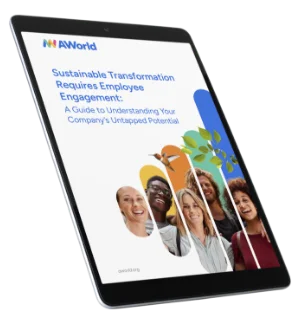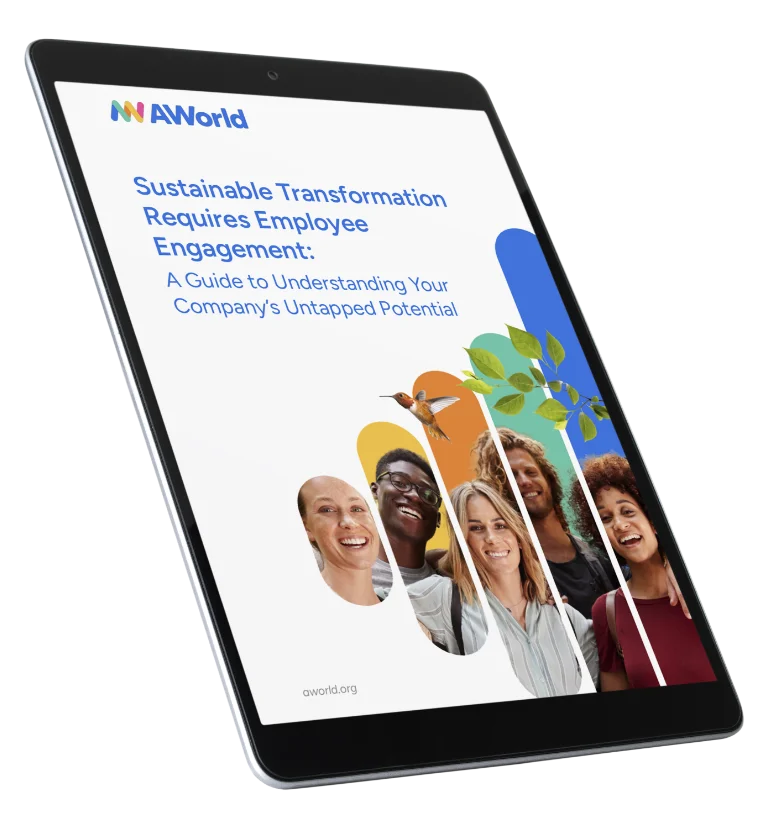In today’s corporate landscape, the importance of ESG factors has risen to the forefront, reshaping corporate strategies and stakeholder expectations.
As companies navigate this evolving terrain, understanding and implementing ESG and sustainability reporting has moved from a niche concern to a core element of corporate responsibility and strategy. This article is designed to provide entrepreneurs, CEOs, sustainability managers, and the eco-curious with all the knowledge and tools they need to understand and excel in ESG and sustainability reporting.
In an era where transparency, accountability and sustainable practices are not only valued, but demanded, this article can serve as your company’s guide. It will enable you to align your business practices with the highest standards of environmental stewardship, social responsibility and ethical governance, as well as transform ESG reporting from a legal requirement to a strategic asset that can elevate your company’s market position, improve stakeholder confidence and drive long-term, sustainable growth.
What does ESG mean?
ESG stands for Environmental, Social and Governance. It is a comprehensive framework that assesses a company’s impact on three critical dimensions:
- Environment: how a company interacts with the environment. It includes a company’s carbon footprint and the measures taken to reduce it.
- Social: a company’s relationships and reputation within the broader society. It examines how it manages relationships with employees, suppliers, customers and the communities in which it operates.
- Governance: the internal system of practices, controls and procedures that a company adopts to govern itself, make effective decisions, comply with the law and meet the needs of external stakeholders.
Understanding ESG factors means looking beyond financial metrics and assessing a company’s broader impact on the world and its ability to manage risks and opportunities in these three areas. It is about assessing how a company’s strategies and operating practices align with environmental protection, social responsibility and effective and ethical governance. This approach offers a more sustainable and holistic view of a company’s long-term performance and profitability.
ESG, CSR and Sustainability: What’s the Difference?
While often used interchangeably in the corporate lexicon, ESG, CSR and sustainability are distinct concepts with unique implications and scopes:
- Environmental, Social and Governance (ESG)
ESG represents a quantifiable, metrics-driven approach that investors and stakeholders use to assess a company’s ethical impact and sustainability practices. It’s a framework that evaluates a company’s collective conscientiousness for social and environmental factors, alongside its governance standards. - Corporate Social Responsibility (CSR)
CSR is broader in scope and pertains to a company’s self-imposed initiatives and commitment to contribute positively to social goals. Unlike ESG, which is often investor-driven and focuses on measurable impact, CSR is voluntary and tends to be more company-driven. It encompasses philanthropy, volunteering and ethical business practices. CSR is about a company’s efforts to improve society in ways that go beyond the financial interests of the company and abiding by the law. - Sustainability
This is the most overarching concept, fundamentally concerned with the capacity for the biosphere and human civilization to co-exist. In a business context, it refers to doing business without negatively impacting the environment, community or society as a whole. Sustainability focuses on meeting the needs of the present without compromising the ability of future generations to meet their needs. It is often seen as a long-term goal, whereas ESG and CSR can be viewed as pathways for becoming a sustainable company.
ESG Reporting: Global Regulations
In the European context, ESG reporting is increasingly taking a regulatory form through the EU Taxonomy, SFDR and CFDR:
- EU Taxonomy: a classification system for environmentally sustainable economic activities, aiming to provide standardized definitions to prevent greenwashing, encourage sustainable practices and steer investments towards more sustainable organizations
- Sustainable Finance Disclosure Regulation (SFDR): implemented in March 2021, this regulation outlines disclosure obligations for organizations to demonstrate how they consider sustainability risks in decision-making and report their ESG strategy, goals, and impacts to investors. Under SFDR, financial market participants must disclose 18 mandatory indicators and choose at least two from 46 optional ones
- Corporate Sustainability Reporting Directive (CSRD): set to replace and tighten the existing Non-Financial Reporting Directive (NFRD), requiring larger companies and all listed companies to provide key non-financial performance indicators and other relevant information.
For ESG disclosure, companies can present information in the way they see fit, through the use of recognised frameworks such as:
- Global Reporting Initiative (GRI): a structure that assists companies in disclosing their environmental, economic and social impacts. GRI is the most referenced ESG framework across sectors
- Sustainability Accounting Standards Board (SASB): a set of standards that helps companies gather and share ESG data relevant to financial decisions and sustainability impacts
- Task Force on Climate-related Financial Disclosures (TCFD): a framework that focuses on principle-based recommendations for managing and reporting, primarily on climate risks
- Carbon Disclosure Project (CDP): an international non-profit organization focusing on standards for disclosing greenhouse gas emissions, water use, and forestry management
- Streamlined Energy and Carbon Reporting (SECR): a UK government framework guiding organizations on annual carbon emission and energy use reporting
- Workforce Disclosure Initiative (WDI): a collective of investors aiding companies in communicating workforce practices to stakeholders, improving transparency and accountability in workforce-related issues
What should an ESG Report Include?
ESG reports are comprehensive documents that have to include both qualitative and quantitative information on a company’s Environmental, Social and Governance practices and impacts. The key components of these reports are:
- Environmental factors: how a company is addressing environmental challenges. It includes efforts to combat climate change, reduce carbon emissions, preserve biodiversity, improve air and water quality, combat deforestation, manage waste responsibly and use resources and supply chains sustainably
- Social factors: this part focuses on the company’s impact on society. It encompasses how the company nurtures its people and workplace, its initiatives for gender, BIPOC, and LGBTQ+ inclusivity, employee engagement, data protection and privacy policies, community involvement and adherence to human rights and labor standards
- Governance factors: this section details how the organization maintains ethical conduct and manages its investments to remain sustainable. It includes information about the company’s internal controls, leadership policies, board composition, executive compensation, audit committee structure, shareholder rights, anti-bribery and anti-lobbying measures, political contributions and whistleblower programs
Benefits of ESG reporting for Companies: a Closer Look
The practice of ESG reporting brings a multitude of tangible benefits to companies, extending far beyond mere compliance. By delving deeper into these advantages, we can appreciate how ESG reporting is not just a corporate responsibility, but a strategic business imperative.
Risk management and Resilience
ESG reporting enables companies to identify and assess environmental, social and governance risks that might otherwise go unnoticed. By proactively addressing these issues, companies can avert potential crises or controversies.
Attracting investment and Enhancing Investor Relations
In the modern investment landscape, there is a growing emphasis on sustainable investment. Investors and shareholders are increasingly considering ESG factors as critical indicators of a company’s long-term performance and risk profile. By presenting robust ESG reports, companies can attract a broader range of investors, particularly those focused on sustainable and responsible investment.
Brand Reputation and Customer Loyalty
Companies with strong ESG credentials often enjoy enhanced brand perception and customer loyalty. In a market where consumers are more environmentally and socially conscious, companies that demonstrate ethical practices and sustainable initiatives are more likely to attract and retain customers.
Operational Efficiencies and Cost Reduction
ESG initiatives often lead to improved resource efficiency, such as reduced energy consumption or waste production. These operational efficiencies not only contribute to environmental sustainability but also translate into significant cost savings for the company.
Employee Engagement and Talent Attraction
Companies committed to strong ESG principles are often more attractive to current and potential employees. This commitment can manifest in various forms, such as creating a diverse and inclusive workplace, ensuring fair labor practices and providing a safe and healthy work environment. These factors play a crucial role in employee satisfaction, retention and productivity, and in attracting top talent who seek aligned employers with responsible business practices.
ESG reporting: Best Practices
- Assemble an ESG team, including roles like sustainability consultant, diversity consultant and ESG risk manager, to effectively address the complexities of ESG
- Choose an ESG framework from options like ISO, GRI, SDG and SASB to set up for success and ensure a holistic view of ESG performance
- Set ESG goals and align them with the chosen framework, focusing on specific areas like greenhouse gas emissions, waste management and facility safety to make strategic changes and ease the disclosure of ESG efforts
- Identify metrics for ESG goals to measure progress, ensuring they are comprehensive, objective and universal to accurately reflect ESG performance
- Collect ESG data to avoid greenwashing and translate this information into an ESG score, which reflects risks, opportunities and the efficacy of initiatives
- Create visibility around ESG performance by creating clear, centralized reports with real-time insights and easy-to-interpret dashboards:
- Monitor ESG issues, staying updated with regulatory, political and shareholder developments to preemptively address potential problems and adapt strategies
- Utilize tools for the creation and the management of ESG reporting, ensuring accuracy, efficiency and compliance with relevant standards. One such tool is AWorld, a platform designed to assist in the efficient and accurate creation of ESG reports
Creating ESG reports with AWorld
Creating effective ESG reports with AWorld involves leveraging the platform’s features and capabilities to streamline and enhance the reporting process. Here’s a detailed guide on how to utilize AWorld for ESG reporting:
- Initial Setup and Customization
Begin by setting up your company profile on the AWorld platform. This involves inputting basic company information and customizing settings to align with your specific ESG reporting needs. You can define the reporting period, select relevant ESG criteria based on your industry and set goals and targets - Data Collection and Management
Utilize AWorld’s comprehensive data collection tools to gather relevant environmental, social and governance data. This might include energy usage, waste management, and more. The platform can integrate with your existing data systems or provide tools for manual data entry - Report Generation
Use AWorld’s reporting feature to compile and generate your ESG report. The platform can automatically populate standard report templates with your data, or you can customize the report’s format and content to suit your preferences - Distribution and Communication
Once your report is ready, use AWorld to distribute it to your stakeholders. The platform can assist in creating accompanying communication materials like press releases, summary documents or presentation slides to effectively convey your ESG achievements and commitments
By following these steps, your company can create comprehensive, credible and compelling ESG reports using AWorld, showcasing their commitment to sustainability and responsible corporate practices.






